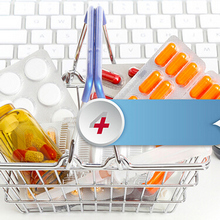
Short general description of Micronase
Micronase, also known by its generic name glyburide, is an oral medication used to treat type 2 diabetes. It belongs to a class of drugs called sulfonylureas, which work by stimulating the pancreas to produce more insulin and helping the body use insulin more effectively. Micronase is typically prescribed alongside diet and exercise to control blood sugar levels.
Key features of Micronase:
- Brand name: Micronase
- Generic name: Glyburide
- Drug class: Sulfonylureas
- Primary use: Treatment of type 2 diabetes
- Mechanism of action: Stimulates pancreas to produce more insulin and improves insulin utilization
- Prescription requirement: Yes
When taken as prescribed, Micronase helps regulate blood sugar levels and can improve overall diabetes management. However, it is important to note that Micronase is not effective for individuals with type 1 diabetes as it relies on pancreatic function to produce insulin.
For more detailed information on Micronase and other generic diabetes medications, continue reading the subsequent sections of this article.
Comprehensive Guide to Generic Diabetes Medications
Introduction
Managing type 2 diabetes effectively often involves the use of medications alongside lifestyle changes. Generic diabetes medications, such as Micronase (glyburide), offer affordable alternatives for individuals with limited financial resources and lack of insurance coverage. In this comprehensive guide, we will explore the different types of generic diabetes medications available, their mechanisms of action, potential side effects, and considerations for proper usage.
1. Sulfonylureas
Sulfonylureas, including Micronase, work by stimulating the pancreas to produce more insulin and improving the body’s insulin utilization. This class of medications helps control blood sugar levels and is typically prescribed alongside diet and exercise. However, it is important to note that sulfonylureas may cause hypoglycemia (low blood sugar levels) as a potential side effect.
2. Biguanides (Metformin)
Metformin is one of the most commonly prescribed generic diabetes medications. It reduces blood sugar levels primarily by decreasing the amount of glucose produced by the liver and improving insulin sensitivity. Metformin is usually well-tolerated, with gastrointestinal side effects like nausea and diarrhea being the most common. It is also important to know that metformin does not cause hypoglycemia.
For more information on metformin, refer to the American Diabetes Association website.
3. DPP-4 Inhibitors
Dipeptidyl peptidase-4 (DPP-4) inhibitors work by increasing insulin secretion and reducing glucose production. They also help slow down the absorption of glucose in the gut. Common DPP-4 inhibitors include sitagliptin, saxagliptin, and linagliptin. These medications are generally well-tolerated, with potential side effects including upper respiratory tract infections and joint pain.
For detailed information on DPP-4 inhibitors, visit the Diabetes.co.uk website.
4. SGLT-2 Inhibitors
Sodium-glucose cotransporter-2 (SGLT-2) inhibitors work by blocking the reabsorption of glucose in the kidneys, leading to its excretion in the urine. This mechanism helps lower blood sugar levels. Canagliflozin, dapagliflozin, and empagliflozin are common SGLT-2 inhibitors. Possible side effects include increased urination, genital yeast infections, and urinary tract infections.
For a comprehensive overview of SGLT-2 inhibitors, refer to the Hormone Health Network website.
5. GLP-1 Receptor Agonists
Glucagon-like peptide-1 (GLP-1) receptor agonists stimulate insulin secretion, slow down stomach emptying, and reduce appetite. By mimicking the action of GLP-1, these medications help lower blood sugar levels. Some commonly prescribed GLP-1 receptor agonists include exenatide, liraglutide, and dulaglutide. Possible side effects include nausea, vomiting, and pancreatitis.
For more information on GLP-1 receptor agonists, visit the National Institute of Diabetes and Digestive and Kidney Diseases website.
Conclusion
Understanding the different classes of generic diabetes medications is essential for individuals seeking affordable options to manage their diabetes effectively. Each class of medication has its own mechanism of action and potential side effects. Consulting with a healthcare provider is crucial to determine which medication best suits an individual’s needs and medical history.
Remember to visit reputable sources, such as those mentioned above, for detailed information on specific generic diabetes medications.

Implications of Abruptly Stopping Micronase and Recommended Discontinuation Protocol
Abruptly stopping Micronase, also known as glyburide, can have serious implications for individuals with type 2 diabetes. It is essential to follow a recommended discontinuation protocol when stopping this medication to avoid potential complications.
When Micronase is abruptly discontinued, it can cause a rapid increase in blood sugar levels, leading to a condition called hyperglycemia. In severe cases, this can progress to a life-threatening condition known as diabetic ketoacidosis.
To prevent these complications, it is crucial to gradually reduce the dosage of Micronase under the guidance of a healthcare professional.
Recommended Discontinuation Protocol:
The discontinuation protocol for Micronase typically involves gradually reducing the dosage over a period of time. This allows the body to adjust to the changes and helps prevent sudden spikes in blood sugar levels.
Here is a recommended discontinuation protocol:
- Consult with your healthcare provider: Before making any changes to your medication regimen, it is essential to consult with your healthcare provider. They will evaluate your individual situation and provide specific guidance on discontinuing Micronase.
- Follow the recommended tapering schedule: Your healthcare provider will create a tapering schedule tailored to your needs. This schedule will indicate the dosage reduction over a specific period of time, such as reducing the dose by 25% every week.
- Monitor blood sugar levels: Throughout the discontinuation process, it is crucial to regularly monitor your blood sugar levels. This will help you and your healthcare provider ensure that your blood sugar remains under control.
- Report any changes or concerns: If you experience any changes in your blood sugar levels, or if you have concerns during the discontinuation process, it is important to report them promptly to your healthcare provider. They can make adjustments to the tapering schedule if needed.
- Follow up with your healthcare provider: After completing the discontinuation protocol, it is essential to follow up with your healthcare provider. They may recommend additional monitoring or adjustments to your diabetes management plan.
Following a recommended discontinuation protocol for Micronase will help minimize the risk of complications and ensure a smooth transition to alternative treatment options.
Comparison of Micronase’s Safety and Efficacy Profile with Other Medications in the Same Class
When it comes to treating type 2 diabetes, there are several medications available that belong to the sulfonylureas class, including Micronase. It is important to understand the safety and efficacy profiles of these medications in order to make an informed decision about the most suitable treatment option for managing diabetes. Here, we will compare Micronase with other medications in the same class, highlighting their potential side effects, effectiveness in controlling blood sugar levels, and any specific considerations or contraindications.
Micronase (Glyburide)
Micronase, also known by its generic name glyburide, is an oral medication that stimulates the pancreas to produce more insulin and helps the body use insulin more effectively. It is typically prescribed alongside diet and exercise to control blood sugar levels in individuals with type 2 diabetes.
Main Points:
- Belongs to the sulfonylureas class
- Stimulates the pancreas to produce more insulin
- Aids in the effective utilization of insulin
- Prescribed in combination with diet and exercise
Comparison with Other Sulfonylureas Medications
In comparing Micronase with other medications in the sulfonylureas class, it is important to consider their individual characteristics and potential side effects.
| Medication | Mechanism of Action | Potential Side Effects | Considerations/Contraindications |
|---|---|---|---|
| Micronase (Glyburide) | Stimulates the pancreas to produce more insulin and enhances insulin utilization | – Hypoglycemia (low blood sugar) – Weight gain – Gastrointestinal disturbances |
– Not recommended for individuals with sulfa allergy – May not be suitable for those with impaired renal function |
| Glipizide | Stimulates insulin release from the pancreas | – Hypoglycemia – Weight gain – Gastrointestinal disturbances |
– May not be suitable for individuals with impaired hepatic function |
| Gliclazide | Enhances insulin secretion from beta cells in the pancreas | – Hypoglycemia – Weight gain – Gastrointestinal disturbances |
– Generally well-tolerated, but caution required in certain populations |
Note: The table above provides a general overview of the side effects and considerations for each medication. Please consult with your healthcare provider for personalized information regarding your specific medical condition and needs.
Conclusion
In conclusion, when considering sulfonylureas medications like Micronase, it is important to weigh the potential benefits against the possible side effects and individual considerations. Each medication within this class may have varying effects and contraindications, so consulting with a healthcare provider is essential for determining the most suitable treatment option for managing diabetes effectively and safely. It is important to remember that every individual’s medical history and needs are unique, and the information provided here serves as a general guide to facilitate discussions with healthcare professionals.
Comprehensive Guide to Generic Diabetes Medications
In this section, we will provide a comprehensive guide to generic diabetes medications, including Micronase. We will discuss the various types of diabetes medications available, their mechanisms of action, and potential side effects. We will also provide information on how to properly take these medications and the importance of regular monitoring.
1. Metformin
Metformin is a widely prescribed generic diabetes medication that belongs to the biguanide class. It works by decreasing the liver’s production of glucose and improving insulin sensitivity in the body’s cells. Metformin is often the first-line treatment for type 2 diabetes due to its effectiveness and safety profile. Potential side effects may include gastrointestinal discomfort, such as diarrhea or nausea. It is important to take metformin with meals to minimize these side effects.
2. DPP-4 Inhibitors
DPP-4 inhibitors are another class of generic diabetes medications commonly prescribed. These medications work by inhibiting an enzyme called dipeptidyl peptidase-4, which increases the amount of insulin released by the pancreas and reduces the production of glucose by the liver. Some examples of DPP-4 inhibitors include sitagliptin and saxagliptin. Common side effects may include upper respiratory tract infections and headaches.
3. SGLT-2 Inhibitors
SGLT-2 inhibitors, such as dapagliflozin and empagliflozin, are a newer class of generic diabetes medications. They work by blocking the reabsorption of glucose in the kidneys, leading to increased glucose excretion in the urine. SGLT-2 inhibitors also have the added benefit of promoting weight loss. Potential side effects may include urinary tract infections and increased urination.
4. Alpha-glucosidase Inhibitors
Alpha-glucosidase inhibitors, like acarbose and miglitol, work by slowing down the digestion of carbohydrates in the intestines, which helps control post-meal blood sugar spikes. These medications are often taken with meals to be most effective. The main side effects are gastrointestinal, including gas, bloating, and diarrhea.
5. Thiazolidinediones
Thiazolidinediones, commonly referred to as TZDs, are generic diabetes medications that improve insulin sensitivity in the body’s cells and reduce glucose production in the liver. Examples of TZDs include pioglitazone and rosiglitazone. However, due to potential side effects, such as weight gain and an increased risk of heart failure, their use is limited and closely monitored.
It is important to note that the use of generic diabetes medications should always be discussed with a healthcare provider. They will consider individual medical history and tailor the treatment plan accordingly. Regular monitoring of blood sugar levels, as well as ongoing communication with a healthcare professional, is crucial to ensure the effectiveness and safety of these medications.
If you are seeking more information on generic diabetes medications, we recommend visiting reputable sources such as the American Diabetes Association and the Centers for Disease Control and Prevention. These websites provide valuable resources and up-to-date information to support individuals in managing their diabetes.

Additional information on Micronase and its potential liver toxicity
Micronase, also known as glyburide, is an oral medication commonly used to treat type 2 diabetes. While it is generally safe and effective, there is a rare but serious side effect associated with Micronase known as liver toxicity. It is important for individuals taking this medication to be aware of the signs and symptoms of liver toxicity, as well as the risk factors and precautions to minimize the risk.
Signs and symptoms of liver toxicity
Liver toxicity can manifest in various ways. Some of the common signs and symptoms include:
- Jaundice: Yellowing of the skin and eyes
- Dark urine
- Unexplained fatigue or weakness
- Loss of appetite
- Abdominal pain or swelling
If any of these symptoms occur while taking Micronase, it is crucial to seek immediate medical attention. Prompt detection and intervention can help prevent further complications.
Risk factors for liver toxicity
While rare, certain factors may increase the risk of liver toxicity while taking Micronase. These include:
- Existing liver disease or impairment
- Prolonged use of Micronase
- Excessive alcohol consumption
- Use of other medications that may affect liver function
Individuals with these risk factors should consult with their healthcare provider before starting Micronase. Regular monitoring of liver function may be recommended to ensure the medication is well-tolerated.
Precautions to minimize the risk
To minimize the risk of liver toxicity while taking Micronase, it is important to:
- Follow the prescribed dosage and schedule as directed by the healthcare provider
- Avoid excessive alcohol consumption
- Inform the healthcare provider about any pre-existing liver conditions
- Report any new or worsening symptoms promptly
Regular liver function tests are typically performed while taking Micronase to monitor for any signs of liver toxicity. These tests help detect any potential issues at an early stage, allowing for timely intervention.
It is essential for individuals taking Micronase to have open and regular communication with their healthcare provider regarding their overall health and any concerns that may arise.
For more information on liver toxicity, its prevention, and management, it is recommended to refer to reputable sources such as the American Liver Foundation or consult with a healthcare professional.
Conclusion: Understanding Micronase and Affordable Diabetes Treatment Options
Managing type 2 diabetes can be challenging, especially for individuals with limited financial resources or lack of insurance coverage. However, it is essential to understand the available treatment options and make informed decisions about managing the condition. Micronase, also known as glyburide, is an oral medication belonging to the sulfonylureas class commonly used to treat type 2 diabetes.
Throughout this article, we have provided a comprehensive guide to generic diabetes medications, including Micronase. We have discussed the various types of diabetes medications available, their mechanisms of action, and potential side effects. It is important to note that while Micronase stimulates the pancreas to produce more insulin and helps the body utilize insulin effectively, it may also come with some risks and considerations.
One crucial aspect of using Micronase or any diabetes medication is the proper protocol for discontinuation. Abruptly stopping Micronase can have serious implications for individuals with diabetes, leading to a rapid increase in blood sugar levels and potential complications like hyperglycemia and diabetic ketoacidosis. It is essential to follow a recommended discontinuation protocol, which typically involves gradually reducing the dosage under the guidance of a healthcare professional.
In addition to Micronase, there are other medications within the sulfonylureas class that individuals may consider. It is important to compare their safety and efficacy profiles, potential side effects, and any specific considerations or contraindications before choosing the most suitable treatment option. Consulting with a healthcare provider is highly recommended to determine the best approach based on individual needs and medical history.
Moreover, for individuals seeking affordable generic alternatives for diabetes management, it is crucial to explore different classes of diabetes medications. Metformin, DPP-4 inhibitors, SGLT-2 inhibitors, and other options can provide valuable alternatives. Understanding the mechanisms of action, potential side effects, and considerations for each class of medication can help individuals make informed decisions about their treatment plan.
It is important to note that while generic diabetes medications can be cost-effective, individuals should prioritize their safety and efficacy. Regular monitoring and vigilance are necessary to ensure the medications are effectively managing blood sugar levels without adverse effects. Routine liver function tests are particularly important for Micronase users due to the potential rare side effect of liver toxicity. Awareness of the signs and symptoms, as well as risk factors, can help minimize the risk and ensure timely intervention if needed.
In conclusion, understanding Micronase and other generic diabetes medications is crucial for individuals with limited financial resources and lack of insurance coverage. By being well-informed about the available options, individuals can make informed decisions together with their healthcare provider. Identifying the most appropriate and affordable treatment options for managing type 2 diabetes is essential to maintain optimal health and quality of life.





